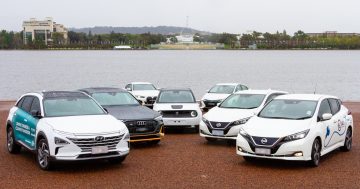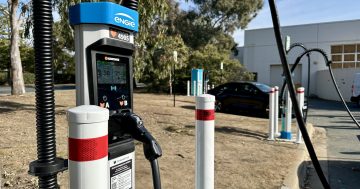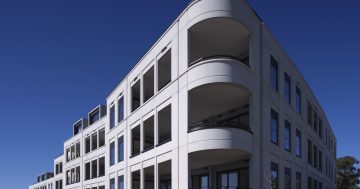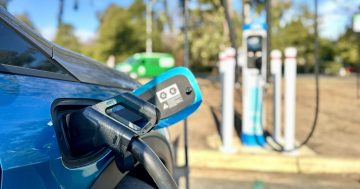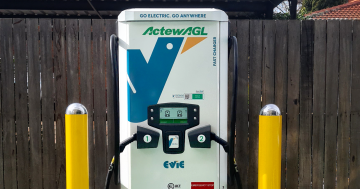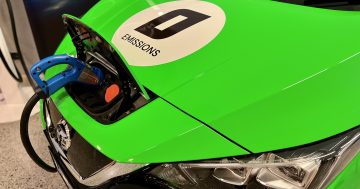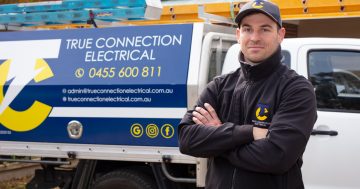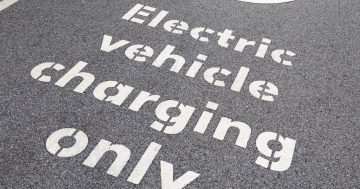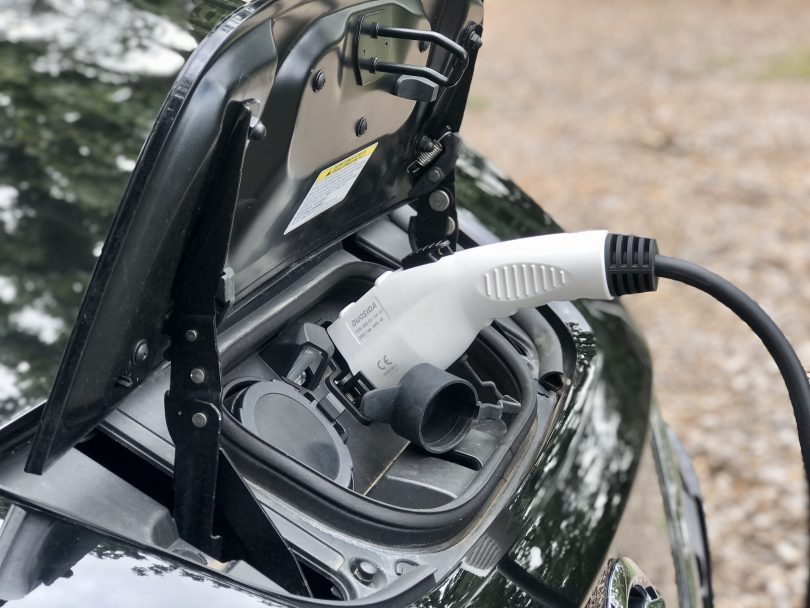
Charging up: public chargers will be needed for many apartment dwellers and visitors to the ACT. Photo: James Coleman.
The ACT will need at least 600 to 1000 public charging stations by 2030 to support the shift to electric vehicles, mainly where charging can’t be done at home, according to a new government outlook pitched at attracting private sector providers.
The Electric Vehicle Charging Outlook released on Monday (13 December) spruiks a substantial investment opportunity for investors and details where public charging stations will be needed most in the ACT as the number of EVs steadily increases.
It says the number of EVs registered in the ACT is expected to be between 25,000 and 42,000 in 2030, up from nearly 1500 in 2021, growing by around 2600 vehicles a year.
The share of new vehicle sales is expected to increase from 2 per cent in 2021 to at least 30 per cent in 2030 as the average price of EVs declines and more models become available.
The government has committed to building 50 new public charging stations across the ACT in 2022 and is seeking expressions of interest from providers but it is looking to the private sector to do the heavy lifting in developing a charging network.
The outlook says public chargers will be needed most in the suburbs with a high proportion of apartments without access to dedicated off-street parking or home chargers, particularly Civic and the town centres.
By 2030, one-third of chargers (more than 200) are expected to be in Civic, followed by Braddon, Belconnen, Phillip and Barton, which combined will contribute to more than half of the EV energy use in the ACT.
Based on charging needs and electricity network constraints, the highest priority suburbs for public charging investment are: 1. Braddon 2. Civic 3. Kingston 4. Belconnen 5. Phillip 6. Griffith 7. Turner 8. Bruce 9. Lyneham 10. Campbell 11. Barton 12. Garran 13. Gungahlin 14. Franklin 15. Harrison 16. Narrabundah 17. Kambah 18. Mawson 19. Curtin 20. Ngunnawal 21. Dickson 22. Casey 23. Greenway 24. Deakin 25. Ainslie.
Minister for Emissions Reduction Shane Rattenbury said that the outlook provided the industry with information on expected trends in electric vehicle uptake, population density and electricity grid capability to help make efficient and strategic investment decisions in the ACT’s growing charging network.
“Canberrans are serious about climate action, so it is no surprise that the number of electric cars registered in Canberra has doubled in the past year, with around 750 more electric cars on ACT roads,” Mr Rattenbury said.
The government wants industry and investors to use this outlook to help them deliver charging infrastructure as convenient as possible.
“The charging outlook sends a strong signal that the ACT is ready to receive further investment in our charging network to support the transition to electric vehicles,” he said.
Mr Rattenbury said efficient and reliable chargers would help ease ‘range anxiety’ for those considering purchasing an electric vehicle, as well as for visitors to the region.
“In particular, the outlook focuses on making sure we meet the charging needs of people living in apartments,” he said. “While some apartment buildings will be able to accommodate EV charging, others may not.”
Last week the government boosted EV incentives with the opening of applications for Canberrans to access zero-interest loans for the purchase of zero-emission vehicles, on top of two years’ free registration and stamp duty exemption for new vehicles, which are already available












